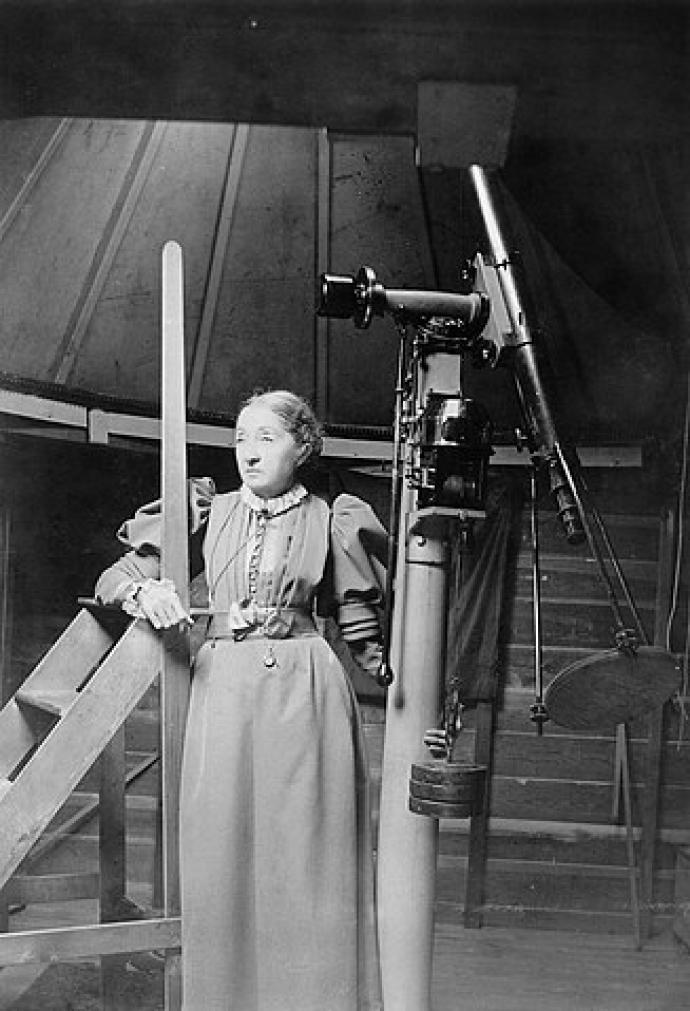Occupation
Meteorologist, Solar Astronomer
Year born
1830
Research areas
Sunspots, Solar eclipses
"The sun is always at hand. No exposure to the night air is involved and there is no need for a costly array of instruments."
Source: In Pusuit of a Shadow, Elizabeth Brown (1888)

- Early Life
Elizabeth was born in Cirencester, UK, in 1830.
Her father was the one to spark her interest in science. This was rare as very few women were helped to study or work in science at the time.
- Career Highlights
Elizabeth and her father measured the amount of rain which fell each day. They shared their data with the Royal Meteorological Society. When she was 53, Elizabeth's father died. After his death, she chose to spend less time recording the weather on Earth and more time studying changes in our Sun.
Elizabeth joined the newly formed Liverpool Astronomical Society. This meant she had to make a 140-mile round trip from her home to get to meetings. Elizabeth also went on trips to Russia and the West Indies to study solar eclipses. She wrote 2 books about her travels, ‘Pursuit of a Shadow’ and ‘Caught in the Tropics’.
Each day, Elizabeth observed sunspots on the Sun. Sunspots are dark patches on the surface of the Sun. They do not stay in the same place and also change in size. Elizabeth made detailed measurements and drawings of the sunspots she saw. Other astronomers noticed her excellent work, and she was soon in charge of the Solar Section of the Society. Aged 60, Elizabeth was a key part of the group who set up the British Astronomical Association. She was the Director of its Solar Section until her death aged 69.
- Legacy
Elizabeth had her own observatory and may have been the first woman to do so.
Aged 63, Elizabeth joined the Royal Meteorological Society. In 1892, she was selected to join the Royal Astronomical Society. She would have been the first woman to join but did not get enough votes. The society finally admitted women in 1916, nearly 100 years after it first opened its doors.
- Other Interests
Elizabeth was a Quaker. She was the first British Quaker to find success as an astronomer.
